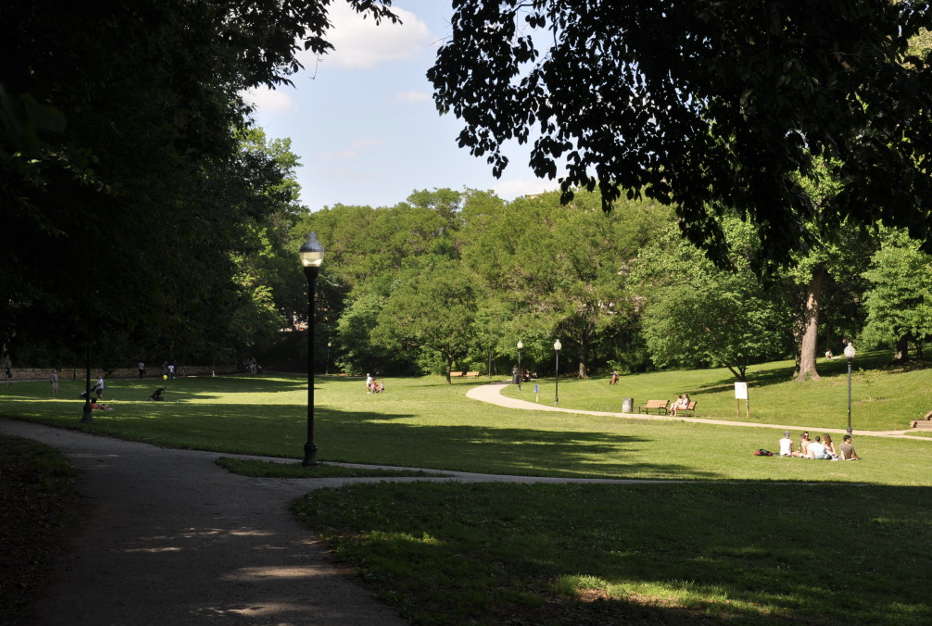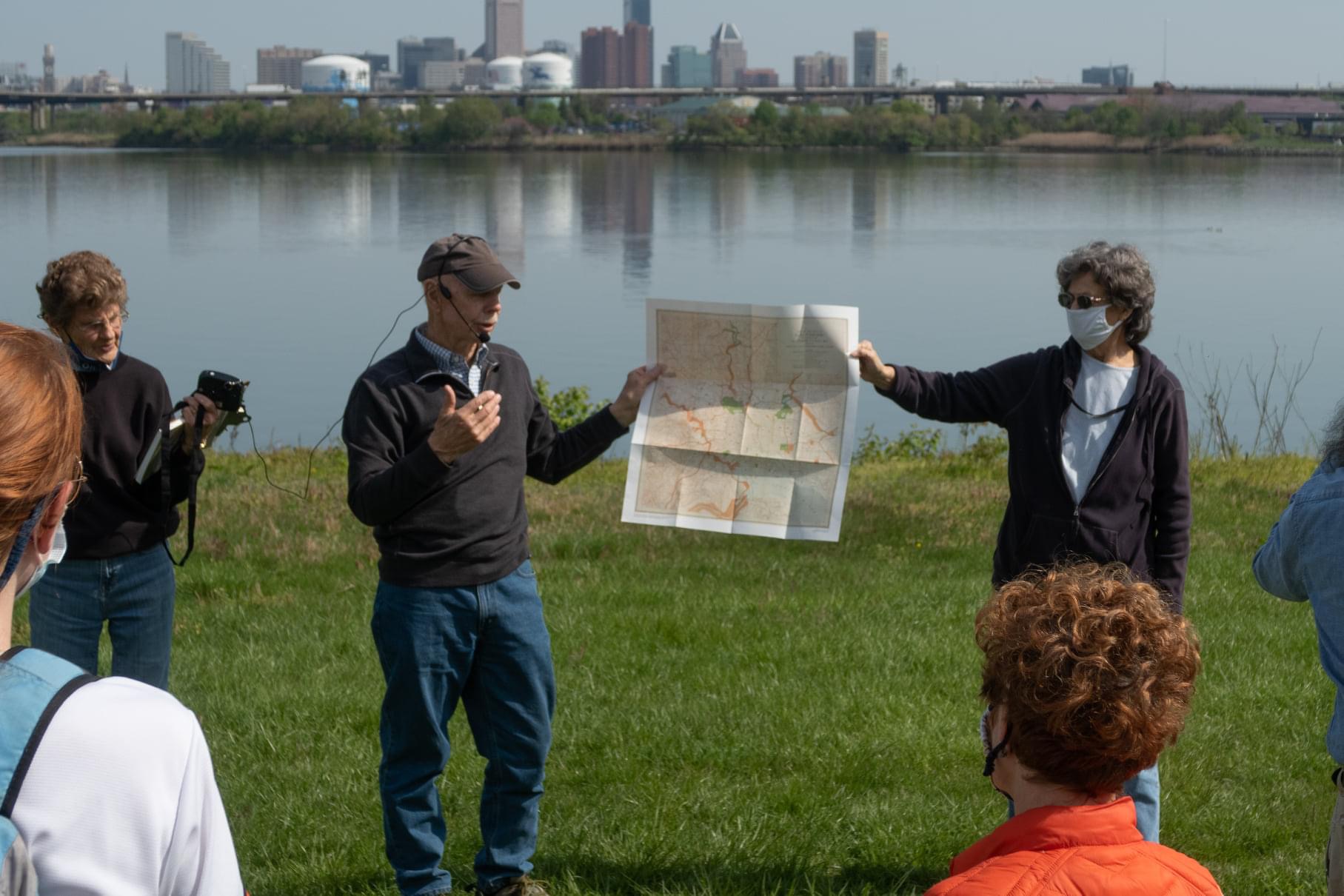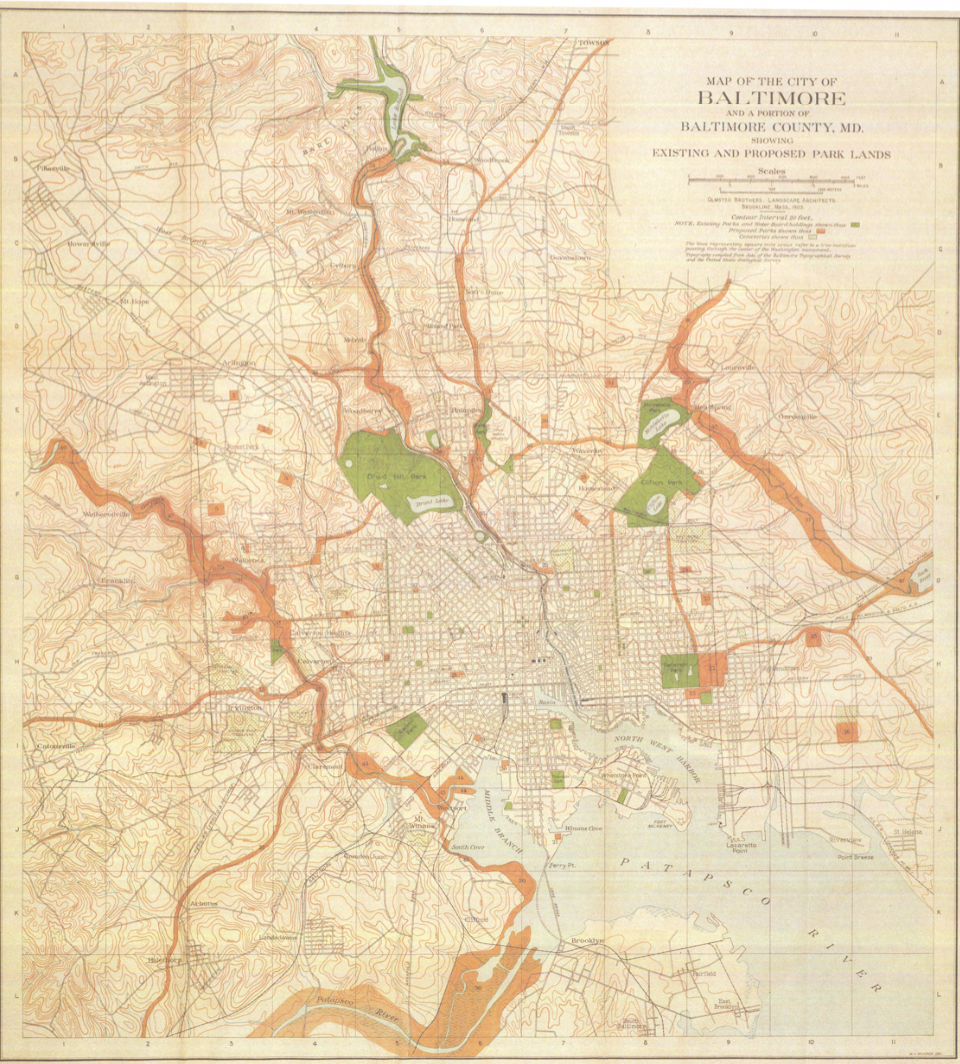
The Friends of Maryland’s Olmsted Parks & Landscapes (FMOPL) can testify to the wide range of projects the firm undertook in Maryland, with the combination of park and residential planning for Baltimore hardly exceeded anywhere in the country.
While an inventory of Olmsted firm projects is an imperfect measure, since some were major, others where involvement may have been limited, the numbers for Maryland projects from The Master List of Design Projects of the Olmsted Firm, 1857-1979 are extraordinary:
Parks, Parkways, Recreation Areas and Scenic Reservations: 41
City and Regional Planning and Improvement Projects: 10
Subdivisions and Suburban Communities: 11
College and School Campuses: 13
Grounds of Public Buildings: 4
Private Estates and Homesteads: 43
Cemeteries and Church Grounds: 6
Several major projects were the work of Frederick Sr., most notably a re-design for the grounds of Baltimore’s Washington Monument (since altered) and plans for the pioneering suburban development in the region, the railroad-commuter residential community, Sudbrook Park. But the most extensive legacy stemmed from projects undertaken in the era when son Frederick Jr. and step-son John took the helm as Olmsted Brothers Landscape Architects. While there are important examples of their work throughout the state, the most significant impact was in Baltimore, where they laid the footprint for the City’s modern park system and applied their landscape principles to the design of prestigious new residential communities:
Creating the footprint for the modern park system included completing the 1904 comprehensive master plan for park system development, as the expanding city anticipated substantial growth from impending annexation, and the follow-up 1926 plan addressing additional park needs to mid-century. Both major reports have been reprinted by FMOPL and are available for purchase.
Designing Individual Parks included the Wyman Park Dell, an “Olmstedian” gem in miniature, and Latrobe Park, one of the firm’s first efforts to address the active recreation needs of a dense urban environment.
Designing Residential Communities. Including the design of a substantial green wedge of residential neighborhoods on the city’s northern side: Roland Park, Guilford, and Homeland.
(These stories and others are chronicled in FMOPL’s Olmstedian essay series, available in print and digitized on the FMOPL web site).
For the past quarter century, the Friends of Maryland Olmsted Parks & Landscapes have made a substantial contribution to appreciation and promotion of the Olmsted heritage in Baltimore and, to a lesser extent, the state as a whole. The impetus for the organization’s founding was the successful effort to rescue the Baltimore park department’s collection of historic plans from disrepair (including many by the Olmsted firm), resulting in their preservation and digitization (now accessible on-line). An important addition to the collection resulted from the work of FMOPL members to make copies of the full set of Olmsted Firm papers relating to Baltimore parks from the Library of Congress “Olmsted Associates.” These combined resources are now maintained for researchers as the FMOPL Collection at the Baltimore City Archives.
Over the same period, FMOPL has promoted public awareness with tours of significant Olmsted firm-designed Baltimore-area residential communities (Sudbrook Park, Roland Park and Guilford) and City parks (Carroll, Patterson, Gywnns Falls/Leakin, Wyman, Clifton, and Latrobe). The tours, led by landscape architects, planners, historians, and community activists, have done much to promote public awareness of the Olmsted legacy in the region. Recently, FMOPL played a leading role in securing Baltimore City’s first “Historic Landscape” designation for the “Olmsted Parkways,” a series of cross-city green corridors envisioned in the 1904 park plan. FMOPL members also have conducted life-long learning courses for public audiences through such venues as Johns Hopkins University’s Odyssey adult education program.
FMOPL has always emphasized that its goals are not only to call attention to the Olmsted-inspired initiatives in the past, but to consider the continuing relevance of the Olmsted legacy for today, enunciated in its mission statement:
FMOPL is committed to advancing the Olmsted legacy of accessible public parks, sustainable landscapes, and livable communities—respecting and protecting the accomplishments of the past and seeking relevant solutions for the challenges of today.
As its contribution to the Olmsted Bicentennial, the FMOPL Archives Committee has compiled a Master List of the digital and archival records for projects throughout Maryland that involved the Olmsted firm— 136 projects in all! By sharing extensive archival material through this Master List, FMOPL welcomes research on Maryland Olmsted Projects. http://www.olmstedmaryland.org/wp-content/uploads/2022/08/Spring-22-Newsletter-Marylands-Olmsted-Archives.pdf
Ed Orser is a member of the NAOP Advisory Council and professor emeritus of American Studies, University of Maryland – Baltimore County. Upon his retirement and in his honor, the Orser Center for the Study of Community, Place and Culture was established at UMBC to foster “innovative collaborations among scholars, students, and local community organizations” and to foster place-based study.











